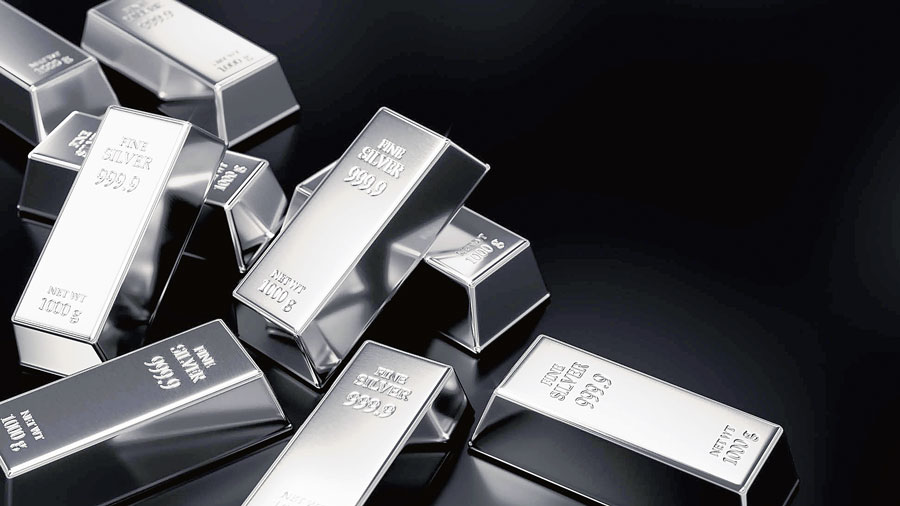Silver, gold’s poor cousin, has found an advocate in the securities regulator. The latter has recently allowed the creation of exchange traded funds based on the white metal, a move that has been welcomed by asset management companies. The latter would now be expected to roll out silver ETFs, just the way they had initiated gold ETFs a decade and a half ago.
The Sebi go-ahead has come at a time when demand for exchange-traded investment products is burgeoning, a trend that is reflected well in the introduction of new funds based on a variety of indices. The near-monopoly enjoyed by Nifty and Sensex, the two main indices, seems to be waning in so far as index funds and ETFs (taken together, they are a unique sub-set of passively-managed alternatives) are concerned. Investors too are believed to be keen on smarter options in the current context.
Silver ETFs, which would help fund houses extend their product basket and offer investors with a contemporary diversifier, would naturally be based on the ruling price of silver, keeping in sync with the exchange-traded nature of the category. It, nevertheless, remains to be seen how the average participant views the newly-formed category, and whether it gains acceptance in the market, at least in the initial phase.
Gold funds, I must mention in this context, have not really met with all-round approval — the relatively small asset bases of the average product in this category underscores their rather low-key image (compared to equity, which of course remains the most high-profile asset class).
Gold, as you will no doubt agree, is seen as a classic hedge against inflation. This is especially true in our country. Indians have by and large trusted the noble metal. We have traditionally hoarded it, handed it over to children, amassed it in our temples, sold it during financial crises. A mountain of historical evidence points to these trends.
Silver, by contrast, is valued as a far simpler adornment of sorts in popular spheres; ordinary users often take to the metal for ornaments. Elsewhere, the metal has wide industrial applications. In sum, India is an importer of the metal, although recent indications suggest that demand for imported silver has decreased. Silver prices, it is moreover said, has not really kept up with expectations. The average priceline has remained static in recent times, while in some years, it has fallen behind its previous marks.
The pros and cons are laid out fairly evenly. Those who wish to allocate to the new-fangled ETF, I suggest the following:
- ETFs are a smart way to allocate to a particular class of asset. These products offer a sense of convenience and ease — an end-to-end transaction through the ETF route is quite a simple process.
- The exchange-traded variety is not a bother, while the entire system of holding silver in its physical form (the traditional way) is cumbersome. Of course, investment in silver can be conducted these days through the commodity exchange route as well.
- The growing popularity of indexing will act as a tailwind for silver as well. Indian investors, in other words, will accept the newly-permitted product category as an extension of their lately-acquired taste for index-based allocations. Witness the growth in investments made on the basis of contemporary equity indices in this context, and you will have a general idea. It is clear that the Indian mindset is changing in favour of innovations.
- Now, those who are not so keen on the issue have lined up a few arguments to build their case. Here goes.
- Silver will not actually create room for a superior investment strategy. Prices are not so dynamic, and trade numbers are not quite as robust as some quarters may like to think.
- No more than a small allocation (read: merely a modest share of one’s overall portfolio) can be recommended because no great gains can be expected at this stage.
- Silver does not offer the kind of “hedge” that gold does. Ergo, investment through ETFs, if any, should focus on gold instead. This is especially true in the contest of inflation, which is believed to be rising quite markedly in the modern world.
Speaking of inflation, the question of interest rates invariably comes up — after all, we are discussing gold too. The fact of the matter is that the central bank has, in its latest policy announced a few days ago, not changed its key policy rates. The repo, about the most significant determinant in the banking sector, remains at 4 per cent.
The RBI’s accommodative stance is being seen in the backdrop of rising prices of commodities. Fossil fuel and other commodities, for instance, have generally added to the inflationary trends that currently prevail in the economy.
All these aspects, not to mention the general bullish sentiments that have impacted the securities market, will have a bearing on the metals space.
And silver will not be too far away from it all. Its price in India will be tracked closely by all concerned in the coming days, and both domestic and international participants will, I hope, take strategic exposure on this front. Only then, perhaps, will the ordinary retail investor appreciate the rationale.
Whether you are a nimble-footed opportunist or just plain curious, you may then embellish your portfolio with a shiny metal, courtesy an ETF worth its salt.
The writer is director, Wishlist Capital advisors











